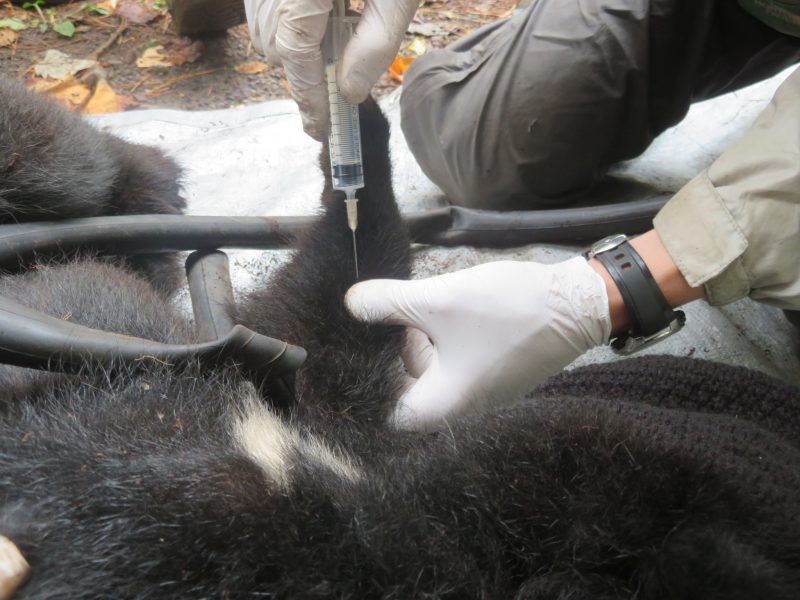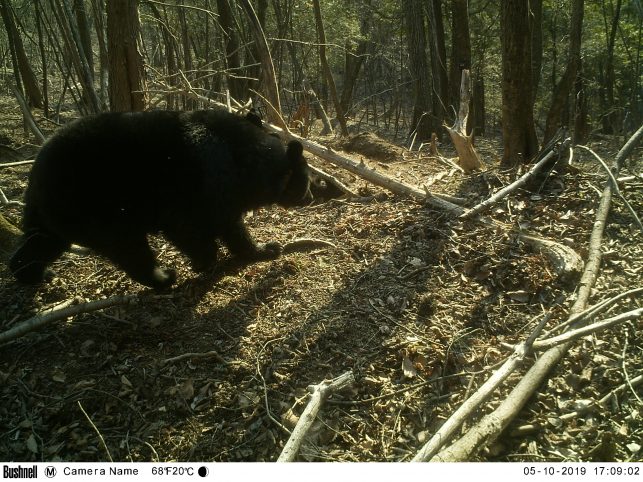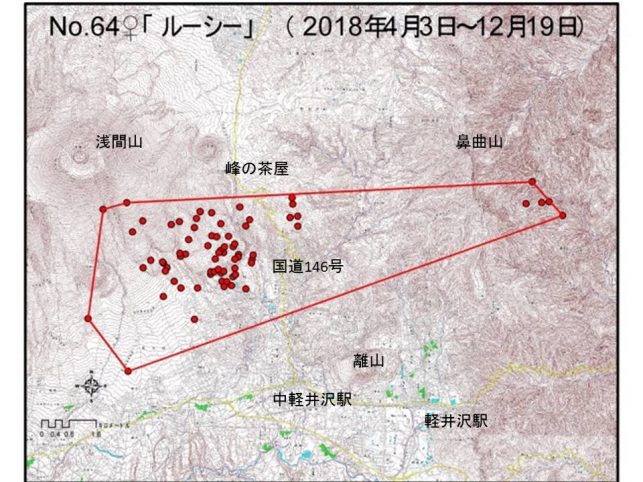
Our Research
As part of our continuous monitoring of the Asiatic black bears we collect a variety of data in order to further study and understand this elusive species. Our surveys and monitoring have led to the publication of various research papers both independently and in collaboration with other institutes.
Infanticide

In 2021, Picchio successfully published a paper in the international journal Ursus, describing the occurrence of infanticide in Asiatic black bears. Because of Picchio's monitoring program, we were able to document an apparent infanticide event through sensor camera footage and identify the individuals involved. This is the first time infanticide has been scientifically documented in Asiatic black bears and we hope this finding will lead to further research relating to bear mortality and mating systems.
Publications
Foraging Habits and Food Availability

Type and availability of food can have a significant impact on the behaviour of Asiatic black bears. By conducting faecal analysis and yield surveys of their main foods (particular berries and nuts) on a regular basis, we continually evaluate the relationship between bear behaviour and food-related factors. In addition, we are studying the role bears play as long-range seed dispersers in forest ecosystems.
Publications
Home Range and Movement Patterns

Our long term tracking of the bears via radio collars has provided us with a lot of valuable location data which helps us to understand the movements of the bears and their use of various habitats. As large mammals, black bears require vast forested areas for their habitat. Researching their movements and behaviour in relation to habitat can help to preserve local biodiversity. Furthermore, since migratory patterns vary between individual bears, it is important to identify and respond to individuals which display potentially problematic behaviour in order to prevent and reduce conflict with humans.
Publications
Winter Den & Breeding Ecology

By tracking bears and placing sensor cameras at the entrances of winter dens we are able to monitor female breeding success and cub mortality. As well as collect information on the location and types of den bears prefer. This helps us to understand the fundamental life history of the bear and can give us an insight into their overall success.
Publications
Veterinary Research
-722x406.jpg)
Samples including blood and hair can be collected from captured bears and sent to Japanese universities such as Nippon veterinary and life science university to assist with studies relating to genetic kinship, nutritional status and breeding.
Publications
Our Development

The world of conservation has always made use of innovative technology and as technology improves so does our ability to monitor and protect wildlife species. Here at Picchio, we are hoping to install GPS collars from 2021 in cooperation with Unabiz (Singapore), in order to improve the monitoring rates of our local bears. Automatic GPS locations will improve our accuracy and efficiency in tracking the bears and reduce our time spent searching for bears in the field via the VHF radio tracking technology. This will allow us to collect even more location data and enable us to make better predictions of bear behaviour based on their movement patterns. We are also hoping to install A.I sensor cameras or similar technology to better enable us to identify individual bears when caught on camera at potential conflict sites. This will allow us to match our countermeasures more specifically to a particular individuals.

How can I help?
Picchio aims for this coexistence and is taking actions to make humans and bears able to live together while maintaining a moderate distance.
Join in Picchio’s tour Apply for internship Donate Now